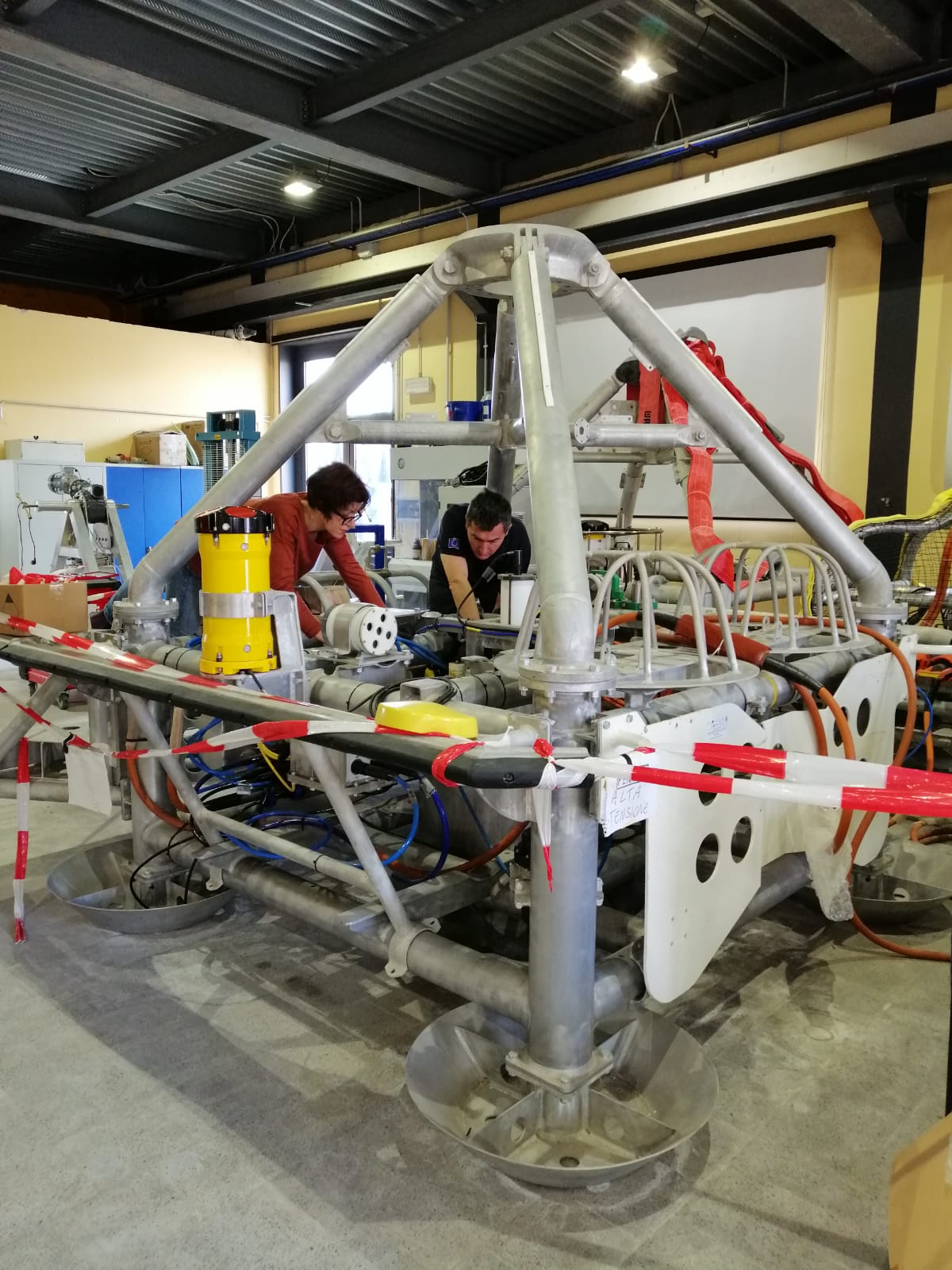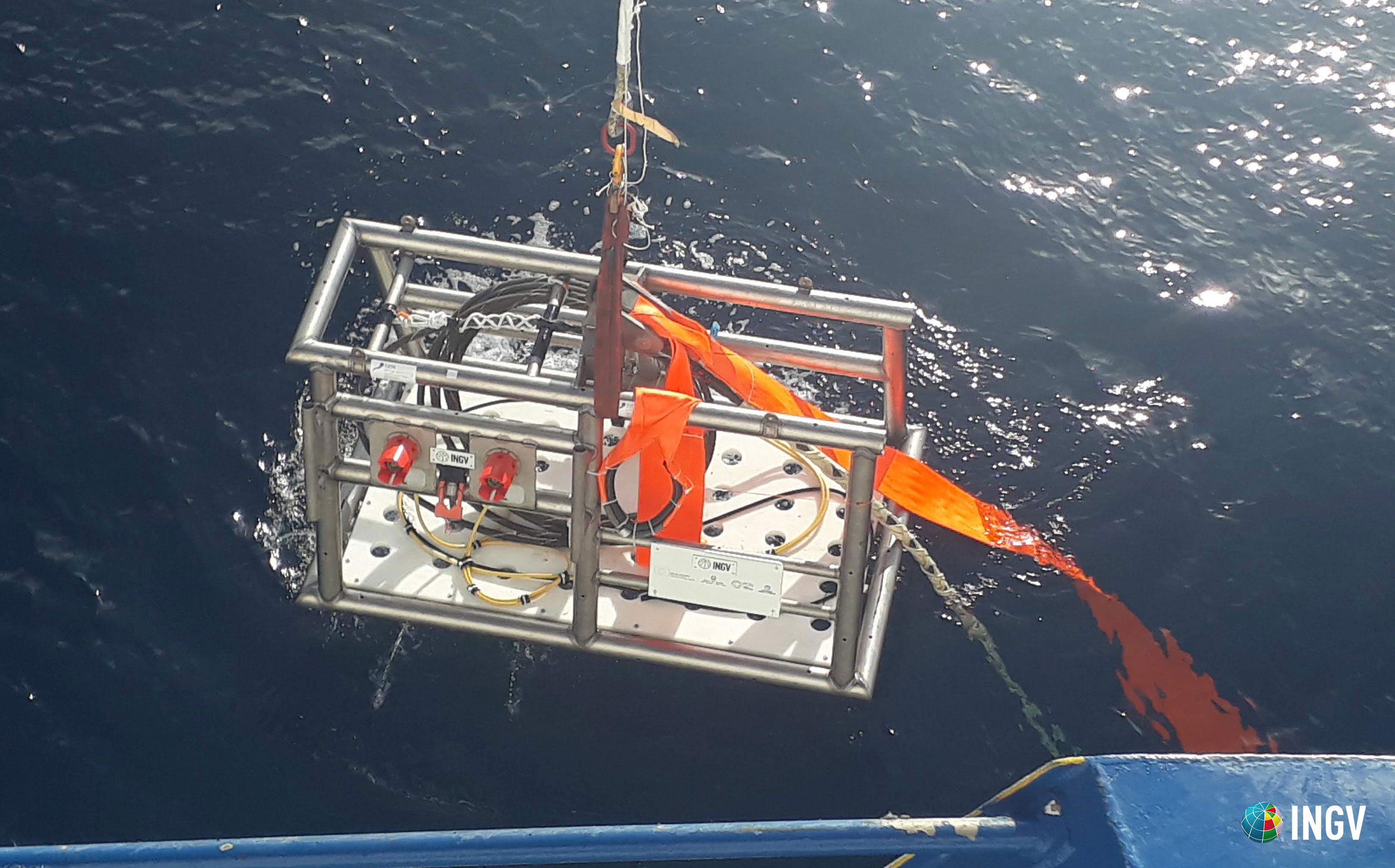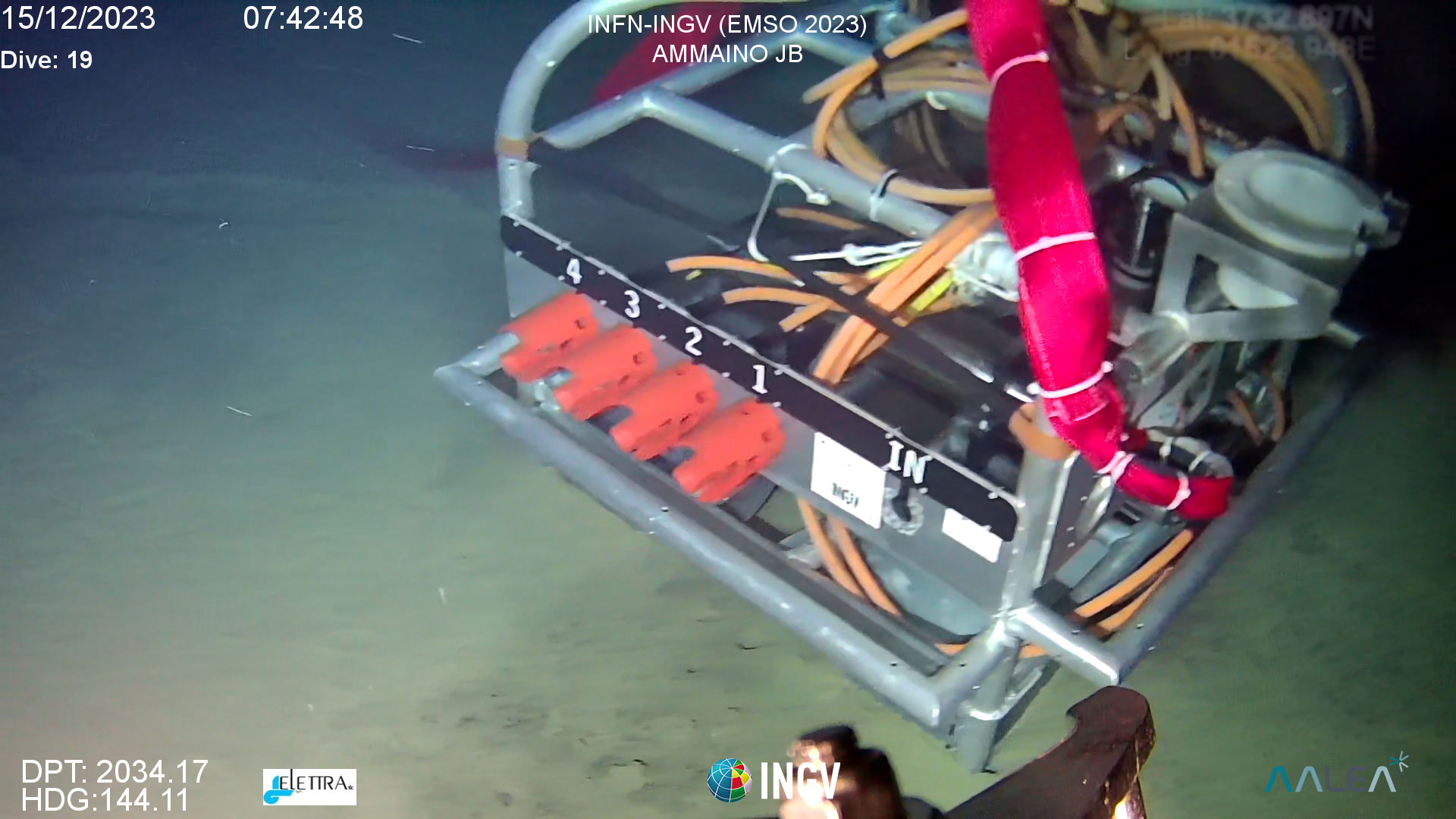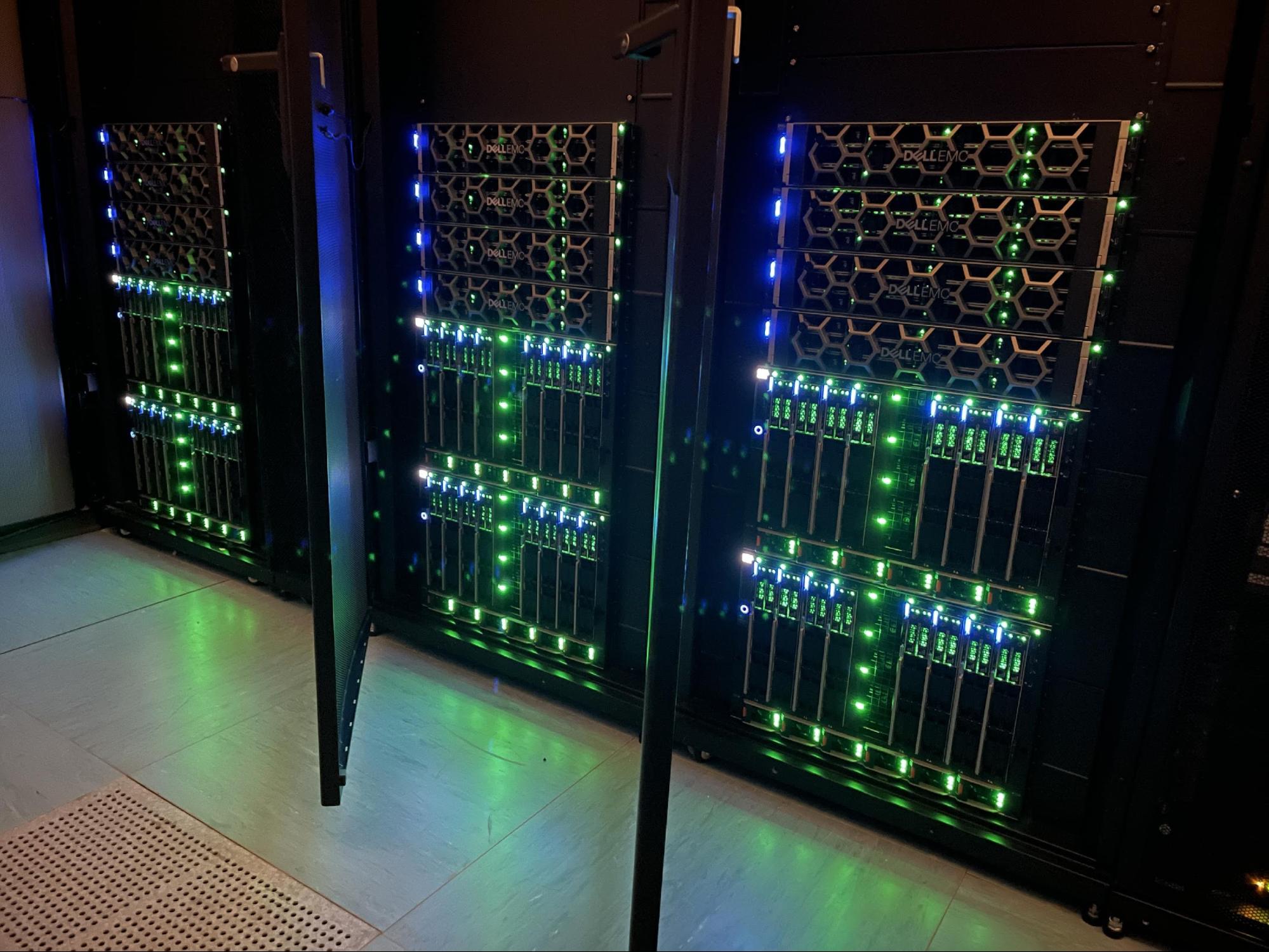INFRASTRUCTURES
The complex platforms built, tested and implemented over the years by INGV have required and still require complementary structures necessary for their construction, development, operation and management. All the components forming part of the Western Ionian Sea infrastructure are described as follows
Ground Laboratory

Ground Laboratory site of the Western Ionian Sea infrastructure hosted at the INFN Southern National Laboratories.

Integration of the instrumentation in the observatory frame at the ground laboratory
Ground Laboratory
The Western Ionian Sea has two laboratories on land, thanks to the many agreements between the National Institute of Nuclear Physics -INFN- and INGV, the first is housed in the port of Catania, while the second is located in Capo Passero di Porto Palo, in the province of Syracuse and hosts the Data Center of the Western Ionian Sea.
The laboratory in Catania hosts the ground terminal part of the electro-optical cable which supplies energy to the submarine instrumentation and manages the data acquisition system acquired on a dedicated server.The laboratory workstations are used for on-site monitoring of all the parameters acquired by the submarine observatories. The acquisition and management servers have an ultra-fast internet connection to transfer the data in almost real time to the servers which guarantee the usability of the data to users. In the same way, the connection makes it possible to monitor the parameters and to manage the observatories completely remotely. In the laboratory, before each deployment operation at sea, are also carried out the integration operations of the instrumentation on the platform frame as well as all the connection and the control tests of the observatory and itsinstrumentation installed
.
.
.
Electro-optical cable
The electro-optical cable, long approximately 28 km, connects the land laboratory with the infrastructure on the seabed. At about 20 km east from the coast, the cable splits into two branches, each one long approximately 5 km, that extend respectively to the south with the South Test Site (TSS) and to the north with the North Test Site (TSN) dedicated to the connection with the Western Ionian Sea. The submarine cable is an electro-optical cable armored with an external steel layer, containing 10 single-mode optical fibers and 6 electrical conductors, of which two conductors and four fibers dedicated to the northern branch and the remaining ones dedicated to the southern site .
The optical fibers of the cable can be used as a tool to study the effects of stress induced by geophysical events on the fibre.
In TSN, the electro-optical cable terminates in a watertight Cable Termination Frame (CTF), designed to withstand great depths and to operate for long periods of time. The CTF allows the simultaneous connection of several observation units to the terminal part of the electro-optical cable.
Hybrid connectors (Teledyne Nautilus™ Rolling Seal Hybrid Wet Mate Connector) provide two fiber optic connections and two electrical conductors on the two outputs and they are manipulable by ROVs. The presence of two fibers on each connector ensures redundancy in case of any failures.
Junction Box
The JB connects to the TSN subsea frame via an ROV-operable electro-optical connector and it’s capable of supplying power (1kW, 350 VDC) and fiber optic data connection up to a total of 4 independent observatories. The power supply and the control of each single output takes place via a special software installed on the server of the ground station from which it is therefore possible to monitor the parameters of each single submarine observatory connected to the doors of the JB. The connectors provide two fiber optic connections and two electrical conductors on the four outgoing and one the incoming ports and they are also ROV-operable.
Data center (Porto Palo)
A new Data Center for archiving, managing, publishing and analyzing the data acquired by the observatories forming part of the Western Ionian Sea Infrastructure has been built at the ground laboratory at Capo Passero, in Porto Palo. This Data Center, federated with the GARR cloud infrastructure, allows you to share data but also storage and computing power with the corresponding data centers of the other EMSO nodes with a view to open data through the cloud.
The Data Center, thus developed, is composed by a cluster of machines with 2400 cores, 3PB of raw storage and 36 TB of ram





